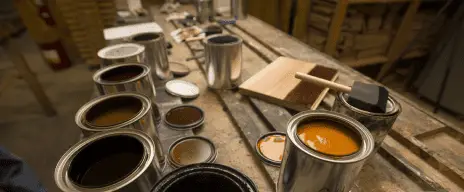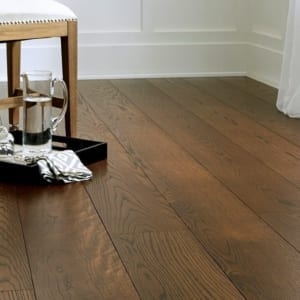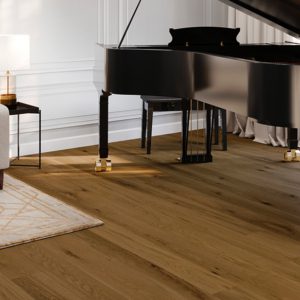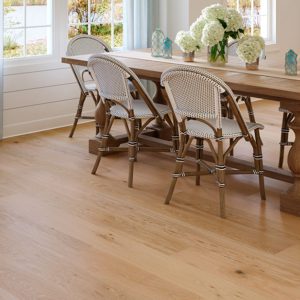Looking for a new wood floors? This 20-page guide can help you explore flooring styles and options as you narrow down your favorite floors.
Floor Heating Systems 101
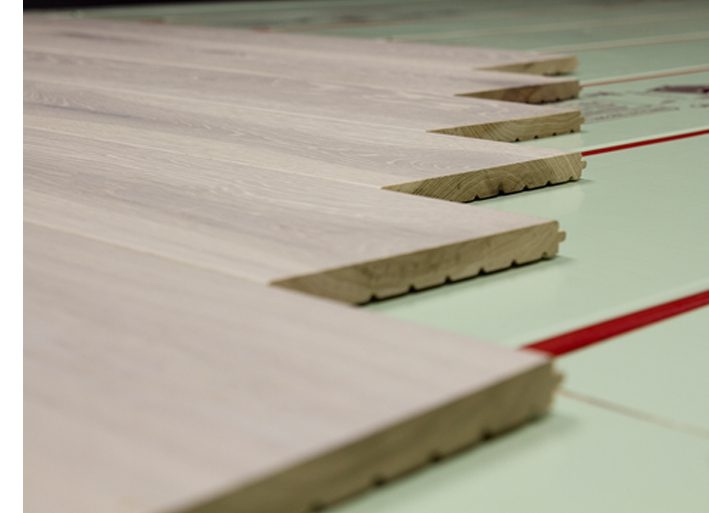
Heated floors just might be the height of luxury. Here’s what you need to know about them.
It’s hard to imagine anything better than rolling out of bed on a chilly morning and stepping onto some warm floors before padding into the kitchen for a hot cup of coffee. Or walking into a beautifully tiled bathroom after a long day, only to be greeted by gentle bathroom underfloor heating and a hot bath. With floor heating systems, you can say goodbye to cold toes and find comfort in every corner of your home. After all, floors shouldn’t just look elegant and upscale; they should feel like a luxurious indulgence.
Like every element of your home, thoughtful intention should go into your floor heating systems. While picking out a floor heating system and installing underfloor heating might feel confusing, it doesn’t have to be. We’ve put together all of the information you need to decide which option is ideal for the house of your dreams.
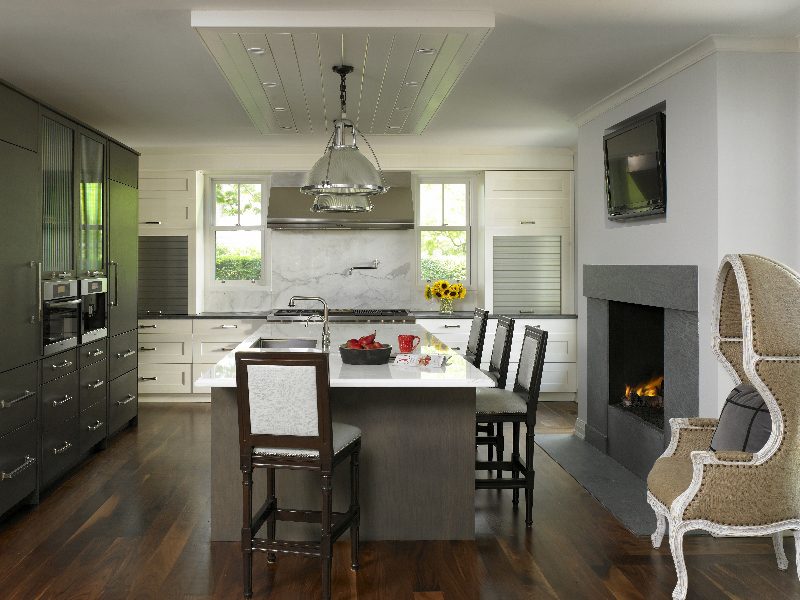
Types of Floor Heating Systems
Underfloor heating, also known as radiant floor heating, uses different technologies and methods to warm your home—and your feet—by heating the floor rather than the air. With radiant floor heating, the underfloor heating elements provide indirect thermal energy that diffuses through your floor into surrounding objects, warming your entire room—not just the area next to the heater. In other words, floor heating is the sleekest, most elegant solution to keep your house warm without relying on bulky radiators or creaky baseboard heaters.
Underfloor heating systems typically come in two primary categories: electric underfloor heating and water underfloor heating. Both types of systems have their advantages and disadvantages. If you’re not sure which is best for you, a flooring professional can help determine which floor heating system is best suited for your needs.
Watch this quick video of Jeffrey Klug, Partner at Butz+Klug architecture in Boston as he explains why wood is the perfect solution over radiant heat flooring. This project was located in Beacon Hill, Boston where 8″ – 12″ White Oak flooring was installed over radiant heat throughout this beautifully renovated Carriage House.
Electric underfloor heating
This common underfloor heating method uses super-thin conductive wires installed directly under your floor using a membrane or wire mats. Electricity runs through these wires, releasing heat and heating your floors in the process. Electric wires are quick to heat up, so once you adjust the thermostat, you’ll feel the difference almost immediately. No more waiting for the heat to crank up. Instant gratification will feel even better on wintry days.
Compared to other radiant floor heating systems, electric underfloor heating is easy to install and typically doesn’t require modifying the subfloor due to its thinness. That means that if you already have the artisanal hardwood floors of your dreams, adding in underfloor heating is a breeze. However, the primary drawback of electric floor heating is that it’s not quite as energy-efficient as other methods. For that reason, many homeowners use this type of system in smaller applications, such as bathroom underfloor heating.
Water underfloor heating
Water underfloor heating, also referred to as warm water or hydronic radiant heating, is a type of radiant floor heating system that uses a matrix of polyethylene tubing to circulate warm water from a boiler or water heater under your floors. While the technology might sound complex, the benefits are simple: efficient heating that outperforms traditional radiators or forced air heating. This method is more costly to install than electric underfloor heating due to its thicker panels. But while installation might be a bit more complex than other systems, the resulting experience—and long-term savings—are easily worth it.
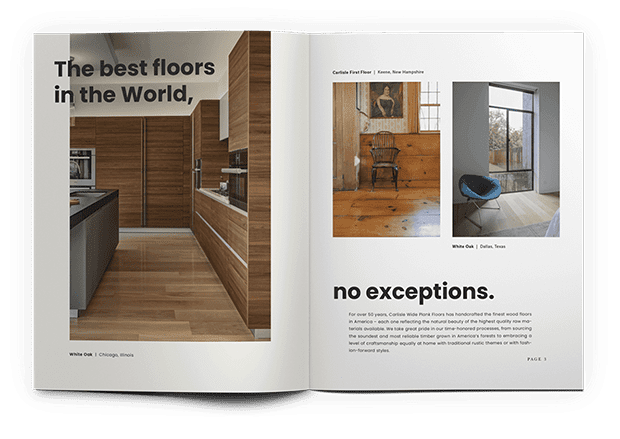
Endless Inspiration for the Floor of Your Dreams
GET DESIGN BOOKBenefits of Radiant Floor Heating Systems
Compared to traditional home heating methods, underfloor heating does a far superior job of distributing heat evenly throughout the room. While forced-air heating and baseboard heating systems are typically installed along the edges of a room, radiant floor heating systems evenly heat the entire room. In fact, radiant floor heating systems can cut energy usage significantly in many modern homes since they operate more efficiently.

Equally important is the comfort and luxury that accompany an underfloor heating system. Sophisticated floors shouldn’t be marred by creaking radiators or loud, dusty vents from forced air. Radiant heating is silent, efficient, and completely invisible. Particularly if you love minimalist, clean lines in your home aesthetic, radiant floor heating systems are a practical and elegant solution. It may feel a little indulgent at first—which is never a bad thing—but you may quickly forget how you ever lived without underfloor heating.
What to Know About Installing Radiant Floor Heating Systems
If you’re ready to ditch the creaking radiators or loud vents for elegant radiant floor heating, there are a few things you should know before you make the switch. First of all, there is no single installation method used for installing underfloor heating—especially in the case of luxury wide plank floors. Every installation will depend on the unique conditions and construction of your home or business. Make sure to talk with your hardwood flooring installer to ensure they have the expertise and knowledge for a seamless installation.
Here are some basics about installing underfloor heating:
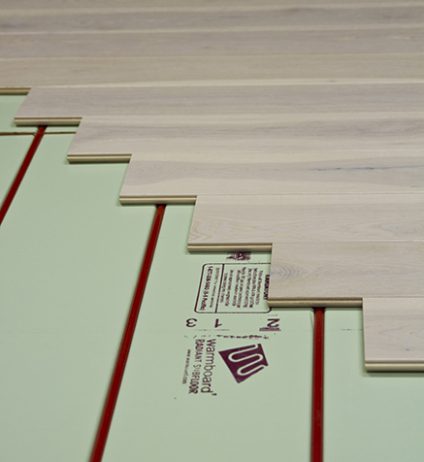
- The radiant heat system should be installed and operational before acclimation and installation of your new floors.
- All wood flooring should be properly acclimated to the environment where it will be installed.
If your radiant heat system includes concrete and/or gypcrete, it must be fully cured prior to acclimation and installation. Your installer should use the proper moisture cure test to verify this. - Your wood floor should be installed using either blind nail and glue or direct glue-down to the subfloor. Not all subfloors (for instance, gypcrete) allow for a direct glue down installation. Your hardwood flooring installer can help verify any relevant restrictions.
- Plan for the seasonal adjustment of your radiant heat system throughout the year.
A radiant floor heating system is the perfect integration for crafted, artisanal hardwood floors. The right floor heating solution is clean and sleek, heating your home efficiently without compromising aesthetics or artistic vision. It’s that extra-special je ne sais quoi that your hardwood floor needs. You’ll be sure to experience luxury and comfort with every step.
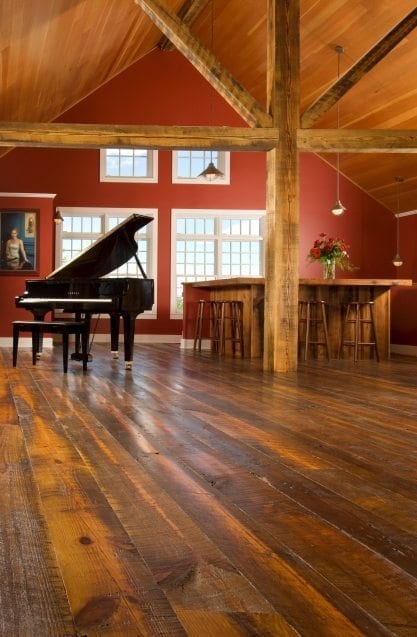
FAQs
Is underfloor heating expensive to run?
While underfloor heating might seem expensive to run, since it’s so luxurious, it can actually be a cheaper method of heating your house in the long run. This is because underfloor heating warms your home more efficiently than traditional radiators or forced air.
Which type of underfloor heating is best?
The best underfloor heating system is the one that fits your individual needs. For example, electric underfloor heating systems are perfect for heating smaller rooms such as bathrooms and are easier to install under existing floors during a renovation. If you’re looking to heat your entire home or business via underfloor heating, hydronic underfloor heating would be the more efficient long-term solution. To make sure you choose the right underfloor heating solution, it’s best to consult a flooring professional to help you make the right decision.
Does underfloor heating work with wooden floors?
Underfloor heating does work with hardwood floors! For the best result, your artisanal wood floors should generally be installed after your radiant heat is operational and the subfloor and finished flooring has acclimated That allows a seamless installation process and easy integration.
Looking for more information? Download our Radiant Heat heat guide
Below are some other blogs and projects with radiant heat that you may find helpful:
The Beauty of Casual Simplicity



